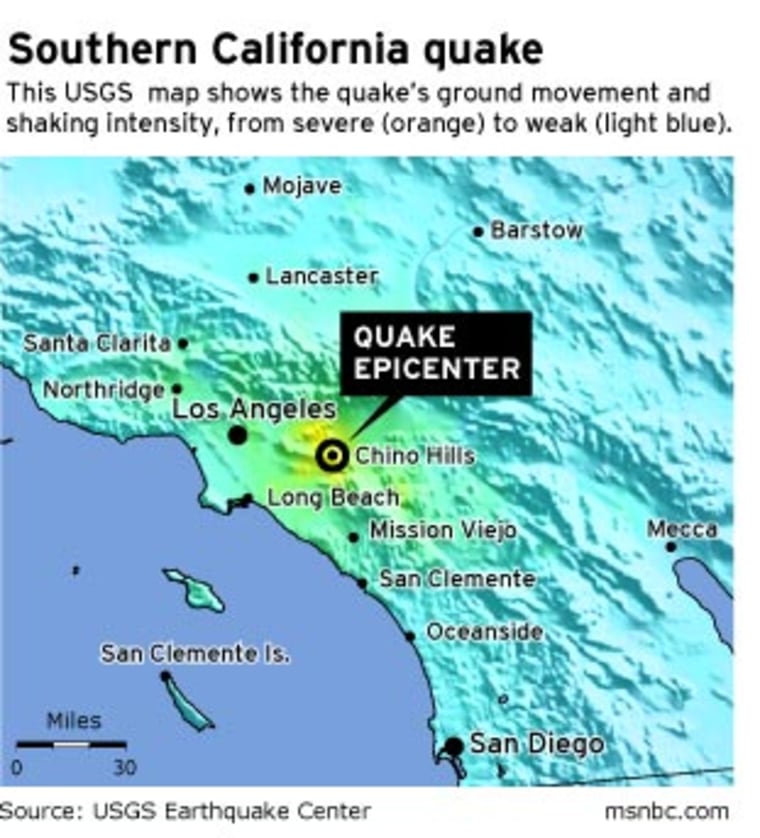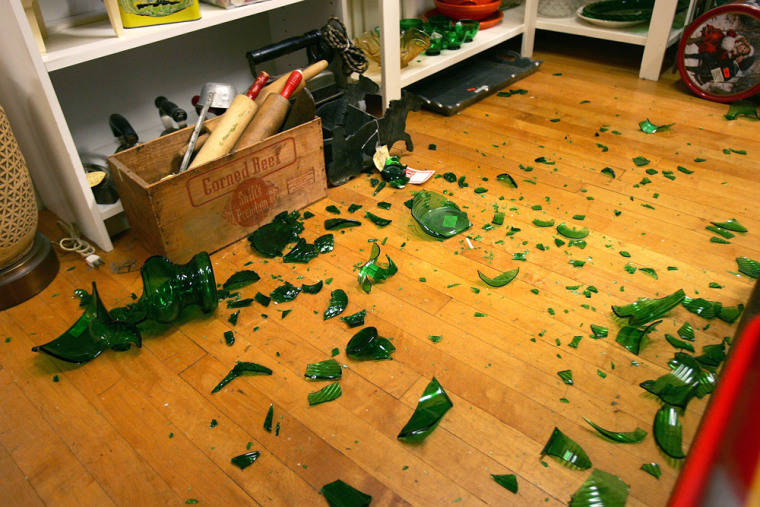Despite shaking a large swath of Southern California, a magnitude-5.4 earthquake was not the "Big One" that scientists have long feared. Still, it rattled nerves, causing people to vow to step up their emergency preparations.
The quake, which rocked the region from Los Angeles to San Diego on Tuesday, caused only limited damage and minor injuries, and served as a reminder of the seismic danger below sprawling freeways and subdivisions.
The temblor's epicenter was located just outside Chino Hills, 29 miles southeast of downtown Los Angeles in San Bernardino County, and it was felt as far east as Las Vegas. Dozens of aftershocks followed, the largest a magnitude-3.8.
"We were really fortunate this time," said Capt. Jeremy Ault of the Chino Valley Independent Fire District. "It's a good opportunity to remember that we live in earthquake country. This is part of living in Southern California and we need to make sure we're prepared."
The magnitude-5.9 Whittier Narrows quake in 1987 was the last big shake centered in the region. Scientists were trying to determine which fault ruptured Tuesday, but they believe it is part of the same system of faults. The 1987 earthquake heavily damaged older buildings and houses in communities east of Los Angeles.
Far less powerfulAs strongly as it was felt, Tuesday's quake was far less powerful than the deadly magnitude-6.7 Northridge earthquake that toppled bridges and buildings in 1994. That was the last damaging temblor in Southern California, though not the biggest. A 7.1 quake struck the desert in 1999.
The heaviest shaking was northwest of the epicenter near suburban Diamond Bar, said Thomas Heaton, director of the earthquake engineering and research laboratory at the California Institute of Technology. He said all buildings constructed in the region since the 1930s should withstand the kind of shaking felt Tuesday.
The earthquake had about 1 percent of the energy of the Northridge quake, he said.

"People have forgotten, I think, what earthquakes feel like," said Kate Hutton, a seismologist at Caltech. "So I think we should probably look at it as an earthquake drill."
"Fortunately in California we have a long history of earthquake building code that means that most of our buildings built after 1933 are relatively safe," Hutton said Wednesday in an interview with TODAY's Meredith Vieira.
The seismologist added that there was a slim possibility that Tuesday's earthquake meant there was a much bigger one around the corner.
"Any time there's an earthquake there is a 5 percent chance of it being a foreshock to a larger quake," she said. "But when we talk about this being an earthquake drill we're talking about it from a societal point of view -- just take it as a drill," she added.
Minor damageThe state Office of Emergency Services in Sacramento received scattered reports of minor infrastructure damage, including broken water mains and gas lines.
"I thank God there have not been any reports of serious injuries or damage to properties," Gov. Arnold Schwarzenegger told a televised press conference. "People understandably are very nervous."
Minor structural damage was reported throughout Los Angeles, along with five minor injuries and people stuck in elevators, said City Councilwoman Wendy Greuel, serving as acting mayor. She said there was flooding in one department store.
To prepare for the "Big One," scientists and emergency planners in the fall will hold what is billed as the largest earthquake drill in the United States. It will be based on a hypothetical magnitude-7.8 temblor. Earlier this year, scientists calculated that California faces a 99.7 percent chance of a magnitude-6.7 quake or larger in the next 30 years.
